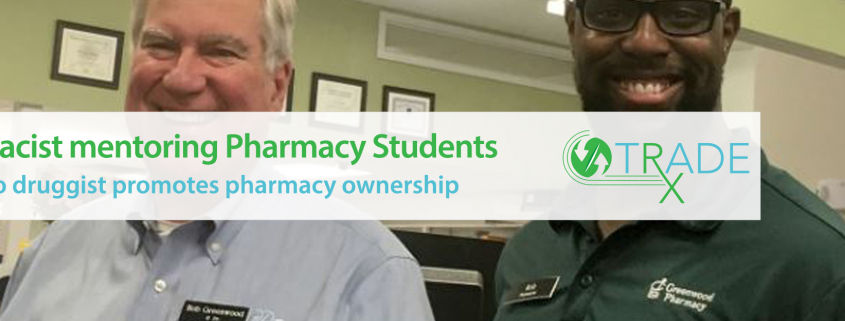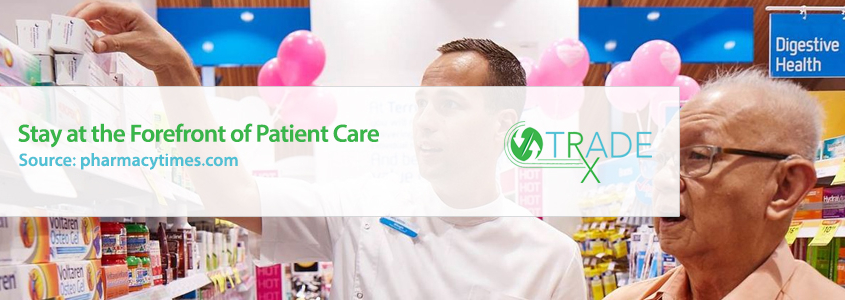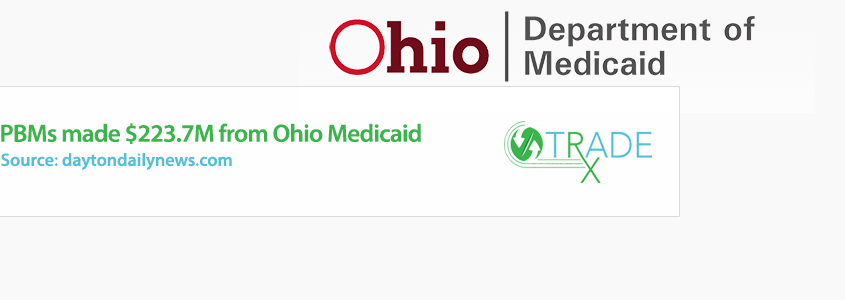Pharmacist mentoring Pharmacy Students and making a difference
Waterloo druggist promotes pharmacy ownership
Source: wcfcourier.com
Nov 25, 2018 | By: Pat Kinney For The Courier
WATERLOO — Bob Greenwood says Rabbi Sol Serber was his most constructive critic.
The late longtime leader of Sons of Jacob Synagogue would call the Waterloo pharmacist frequently.
During Greenwood’s years on the Waterloo City Council, Serber would urge Greenwood to improve his posture at televised council meetings so he looked poised and alert. Serber kept little turtle statues around his home, and urged Greenwood to follow their example and “stick his neck out” every once in a while.
Greenwood followed his mentor’s advice. Thirty years ago, Greenwood stuck his neck out when he left the pharmacy he’d been working at for a decade to run his own independent drug store.
Now, Greenwood’s done it again. He’s mentoring aspiring young independent pharmacists — not just the mechanics of filling prescriptions, but the nuts and bolts of running a business.
Over the last 18 months, he’s had pharmacy school graduates perform a one-year residency through the University of Iowa.
Greenwood’s first resident, Wartburg College and University of Iowa pharmacy school graduate Rob Nichols, now helps Greenwood mentor other young pharmacists.
Nichols, an Ottumwa native who played football at Wartburg, is working for Greenwood full-time and hopes to get his own independent pharmacy when the right opportunity presents itself. He also majored in business, and is saving for the day that can happen. With Greenwood, he’s also working with other fifth-year pharmacy and post-graduate students obtaining field experience.
Greenwood is trying to stem a decades-long decline in independent pharmacies by promoting entrepreneurship in the field. Nichols is one of his best examples of that effort.
“He’s surrounded himself with some of the best pharmacists around the state,” Greenwood said. “So he set himself up to be successful through hard work. And just paying attention. He knew who he had to meet. He was active in the student pharmacy programs both and Iowa and at the national level,” even starting a student chapter of the National Community Pharmacy Association in Iowa City.
“I would say in the last 15 years we probably lost 300 stores,” Greenwood said, where 850 independent pharmacies may have existed when he entered the field. He named at least a half-dozen independent pharmacies in Waterloo-Cedar Falls alone that no longer exist.
The University of Iowa started the pharmacy residency program. While Greenwood’s affiliation is a fairly recent development, over time he’s been very supportive. He’s hired about six to 10 graduates of that program.
Nichols said the program encourages talented students from Iowa “to stay in Iowa, and with that education, to understand the importance of giving back to the community.”
“We want to encourage entrepreneurship, ownership,” Greenwood said. “We have to train these (pharmacists) to backfill these rural communities,” Greenwood said. “Dyersville. Cherokee. Rural areas.”
Greenwood told of one instance in which a small-town pharmacist ready to retire searched five years to find a young qualified pharmacist interested in taking over his store.
Nichols said he decided to enter the pharmacy field late during his undergraduate education at Wartburg; He worked at Meyers Pharmacy in Waverly and became active in professional associations.
“I kind of fell in love with the profession,” Nichols said. “At that point I decided to pursue not only just being a pharmacy technician, but I wanted to pursue the path of being a pharmacist.” He worked as a technician during pharmacy school. He graduated from Wartburg in 2011.
Eventually, he was admitted to pharmacy school at Iowa.
“When I got on there I took on some leadership roles, kept me involved within the profession,” he said. He worked at a pharmacy in Denver operated by Greenwood.
Greenwood was president of the National Community Pharmacy Association at the time Nichols started a student chapter at Iowa. Nichols then worked with the university so Greenwood’s business would become an accredited site for the residency program, emphasizing pharmacy ownership.
“In pharmacy school, you learn everything there is to know about the medications. But in residency, you learn how to take care of people,” Nichols said.
He said his business background guided his decision to focus his residency on ownership.
“And having Bob as a mentor, learning the ins and outs of the business of running a pharmacy, managing a pharmacy, was just an added benefit of me being at this site for a residency,” Nichols said.
His residency concluded in June, and Greenwood hired him full time. He’s working with new pharmacists coming into the residency program at Greenwood.
He was one of just three African-Americans in his pharmacy class at Iowa, and pharmacy mentors who are minorities are rarer still, he said.
For his efforts, Greenwood and his business are receiving an Iowa Trailblazer award from the Coalition to Build a Better Community in Iowa, an organization created by local automobile executive Jeff Zaputil to recognize innovation and initiative in local entrepreneurship.
Greenwood “inspires others to take charge of their own destiny,” Zaputil said.




